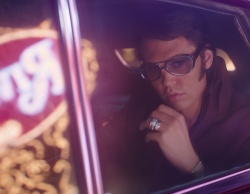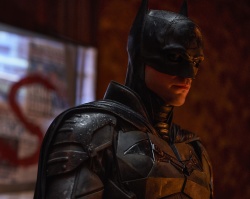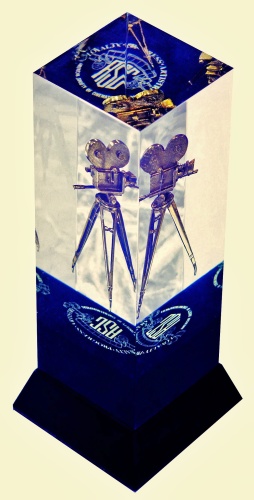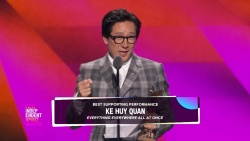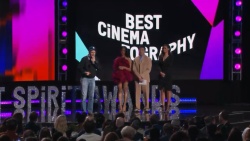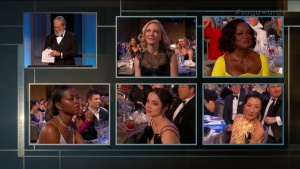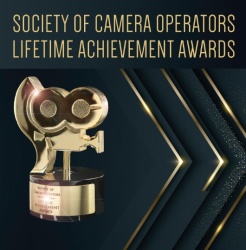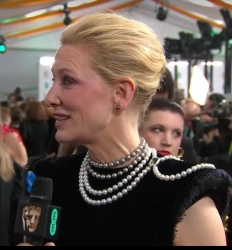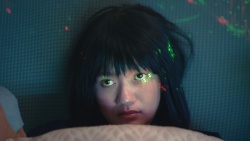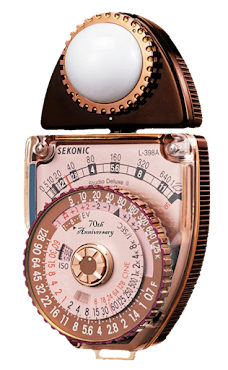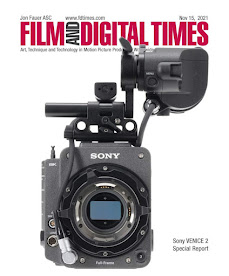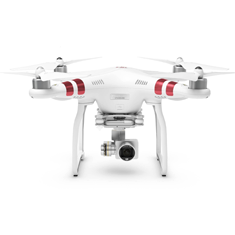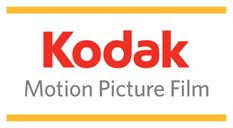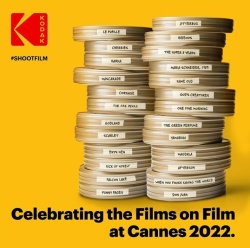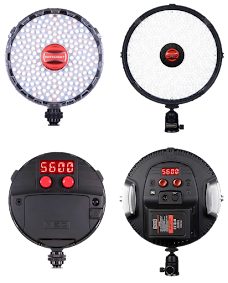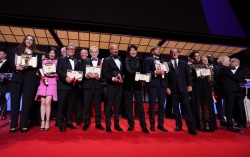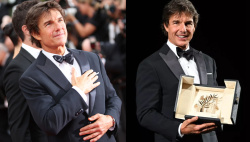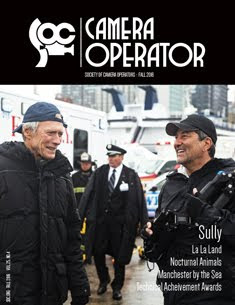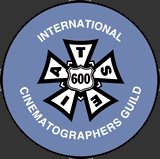SMALLHD CINE 13" 4K HIGH BRIGHT MONITOR
ULTIMATE GUIDE TO CAMERA MOVEMENT
WHY HASSELBLAD CAMERAS ARE SO EXPENSIVE
I owned Hasselblad cameras (CM 500 & 500EL/M) so many years, it was a period over ten years, I was shooting only medium format 120 & large format 5x7, 8x10 chrome & negative film. Seldom 35mm. No digital, no computer, no Insta gratification, no Photoshop, no Lightroom.
Proofing w/Polaroid then process E6 or C41, push or pull and the square format shots were ready for client approval. Good Times. Then, forcibly I had to adopt digital acquisition and Hasselblad equipment went through the roof. But, still Hasselblad are the most reliable & sharp cameras & lenses for high end commercial & studio work. 📷
Some of the most Iconic shots were taken with a Hasselblad (or Hassy as its fans call it). The album cover for The Beatless’ Abbey Road and the iconic Apollo 11 photo of Buzz Aldrin walking on the moon (shot by Neil Armstrong) are a few photos that almost everyone knows. On the flip side of this, a current Hassy would cost upwards of $30,000. And this is for the body only. A Fujifilm GFX 100S, also about 100MP, will set you back ‘only’ $6,000. So why are people willing to invest so much in a Hasselblad-made camera?
The folks from Business Insider dived into the Hasselblad pricing structure. Interestingly, Hassies were not always so expensive. They were pricey, but not to the point they are today. For reference, in 1948, Hasselblad’s first consumer camera cost around $500.
If you account for inflation, you’db be looking at something equivalent to $5,900 in today’s market. And again, looking at adjusted prices for Hasselblad bodies from the ’70s, you’re looking at around $5300.
The big pricing shit came with the move to digital. The first digital Hasselblad, the H1D from 2004, cost about $24,000, and it was a 22.0 Megapixel camera. (The previous film model was less than half that price). Hasselblad says that the main pricing factor for the camera is the large format sensor (Sony is making those). The large sensor allows for excellent low noise performance and impressive dynamic range. But the main reason that the camera is priced so high is that they had all made by hand.
With a low sales volume (The Verge reported under 10,000 units in 2018), you pay for the manual labor. And that is significantly more expensive than an automated assembly line. The video explains that some of the work is done by the same people for over 30 years and is somewhere between a job and a craft. In total, a camera takes about six to eight hours to assemble, with calibration taking a big chunk of that time. And each camera sensor is individually manually calibrated.
[via Image Insider]
Udi Tirosh is the Founder and Editor in Chief of DIYPhotography.
ARRI Hi-5 HAND UNIT
The new ARRI Hi-5 is the most sophisticated hand unit on the market, providing reliable wireless camera and multi-axis lens control.
CINE GEAR EXPO 2019. WHAT IS THERE NEW TO SEE.
we expect to see this year at Cine Gear Expo 2019. (Part 1)
ANGENIEUX
The Optimo Prime series of 12 lenses provides full frame 46.5mm image circle coverage
with a consistent 1.8 T-stop (except on extremes). Available as PL and LPL and designed as
smart lenses, the Optimo Prime Series is very compact and lightweight.
They will support both Cooke/I and Arri LDS; and offer a common gear size and position for all lenses in the 12-lens set. Focal lengths include 18mm, 21mm, 24mm, 28mm, 32mm, 40mm, 50mm,
60mm, 75mm, 100mm, 135mm, 200mm and will be manufactured both in France and Germany.
CINE GEAR EXPO AWARD
HIVE LIGHTING
(Updated Cine Gear Expo 2019 Release) Come to see us at Stage 3 Booth 5408.
- Company Launches LINK HDR, a Revolutionary New System that Empowers Creatives to View Content in HDR Throughout the Imaging Chain
- DXL-M Expands the DXL2 Ecosystem, Meeting Production Needs for any Shooting Scenario
LCND Now has Expanded Features Including Wireless Controls - LEE100 Filter System Makes its Cine Gear Debut
Offering HDR and SDR viewing options in tandem, LINK HDR provides cinematographers, directors, editors and creative talent throughout the imaging chain the ability to view their image at the same quality delivered to consumers.
- Panavision LINK HDR On-Set Cart – a modular cart outfitted with various monitoring configurations that offers creatives the ability to view HDR and SDR live from the camera.
- Light Iron LINK HDR Dailies – an NLE process that creates HDR and SDR deliverables simultaneously, which allows editors to cut, toggle between, and export in either format.
- Light Iron LINK HDR Finish – a combination of creative talent, technical expertise, and leading technologies that link the creative decisions made on-set to the HDR mastering process for delivery to various HDR platforms.
Panavision’s Millennium DXL2 and DXL-M camera systems will also be showcased at the Panavision booth, demonstrating the value of this expanding ecosystem. With new industry developments, the DXL2’s 6G 4K SDI outputs, which allow direct connection to a Teradek Bolt 4K with a single SDI cable, can now be fully utilized. The latest enhancements to the DXL2 also include: an integrated C-Motion F.I.Z. module allowing the use of Arri WCU4 wireless lens control handsets with full lens mapping support; a proxy workflow that allows easy creation of traditional dailies while archiving 8K files for DI and VFX; a wireless audio module adding expanded audio capabilities; and DXL Control for iPhone and Android.
The DXL-M, which marries the modularity and connectivity of the DXL with the smaller size and weight of RED’s DSMC2 cameras, is now available to filmmakers. In addition to the Primo HDR viewfinder, DXL menu system and LiColor2, the DXL-M now offers 2x2 SDI outputs delivering two independent monitoring paths across 4x HD-SDI outputs. Along with added accessories, battery elevator and control upgrades, these advancements add to the efficiency and flexibility of the kit. The result is a fully-equipped camera that is conveniently adaptable to any shooting scenario, including drone, remote head shots and situations where space is at a premium.
Panavision’s LCND, a variable liquid crystal neutral density filtration system, will be presented with expanded new features. LCND is now wirelessly controllable via the Preston handset and offers functionality that translates to creativity on the set. The ability to maintain a given stop under changing lighting conditions by riding the ND filter instead of the iris adds powerful image control options at the moment of photography. LCND also has manual controls and a 24-hour internal battery built into the single filter tray.
- Video links:
- LCND: https://youtu.be/POVfNDdru-8
- DXL2: https://youtu.be/xGL5BVoVw08
- DXL-M: https://youtu.be/tyw5NLUwZBQ
- LINK HDR: https://youtu.be/th8prJZDYzc
16x9
The Easyrig STABIL it will be available onsite at CineGear and we welcome everyone to stop by 16x9 and take it for a test. Also from Easyrig, the Venice Cheeseplate is now delivering. We're excited to invite everyone to visit us at CineGear Expo May 31st through June 1st on the Paramount Studios NYC Streets Backlot, Booth #70.
Orca Bags 3S Harness (Pre-order Only) Booth #70.
The Orca 3S (Spinal Support System) Harness. The new 3S features a patented design to help protect and support audio operators to perform their craft. The 3S can be used with the stand-alone top vest, just the waist belt or the top vest and waist belt combined with the patented Spinal Support System.
The 3S waist belt features a unique "roller buckle" that helps tighten the waist belt on the operator's hips for proper weight distribution and the perfect fit.
Other Features
- Built with special EVA sponge and mesh system for maximum air flow and ventilation
- Pneumatic spring system that helps users adjust height of the harness spine as needed
- Includes two back pockets for storage and USB port with cable for reserve power supplies
Expected arrival - August 2019
End of Part 1. More to come
FIND YOUR PERFECT STORY IN RAWFILM
PREMIUM FOOTAGE STORIES IN REDCODE RAW 4K+ FILES.
CANON UNVEILS EOS R MIRRORLESS CAMERA SYSTEM
Canon EOS R Mirrorless Digital Camera with 24-105mm Lens $3,399.00 BHphotovideo.com
Canon EOS R Mirrorless Digital Camera (Body Only) $2,299.00 BHphotovideo.com
SPECS:
Lens Mount Canon RF
Camera Format Full-Frame
Pixels Actual: 31.7 Megapixel
Effective: 30.3 Megapixel
Max Resolution 6720 x 4480
Aspect Ratio 1:1, 3:2, 4:3, 16:9
Sensor Type / Size CMOS, 36 x 24 mm
File Formats Still Images: JPEG, RAW
Movies: MP4, MPEG-4 AVC/H.264
Audio: AAC, Linear PCM (Stereo)
Bit Depth 14-Bit
Dust Reduction System Yes
Memory Card Type SD
SDHC
SDXC
Image Stabilization Digital, 5-Way
AV Recording
Video Recording Yes, NTSC/PAL
Video Format 3840 x 2160p at 23.98/24/29.97 fps
1920 x 1080p at 23.98/24/29.97/59.94 fps
1280 x 720p at 29.97/59.94/120 fps
Aspect Ratio 16:9
Video Clip Length Up to 29 Min 59 Sec
Audio Recording Built-In Mic: With Video (Stereo)
Optional External Mic: With Video (Stereo)
Focus Control
Focus Type Auto & Manual Focus
Focus Mode Continuous-Servo AF (C), Manual Focus (M), Single-servo AF (S)
Autofocus Points Hybrid: 5655
Viewfinder/Display
Viewfinder Type Electronic
Viewfinder Size 0.5"
Viewfinder Pixel Count 3,690,000
Viewfinder Eye Point 23.00 mm
Viewfinder Coverage 100%
Viewfinder Magnification Approx. 0.71x
Diopter Adjustment -4 to +2 m
Display Screen 3.15" Rear Touchscreen Swivel LCD (2,100,000)
Screen Coverage 100%
Exposure Control
ISO Sensitivity Auto, 100-40000 (Extended Mode: 50-102400)
Shutter Type: Electronic & Mechanical
Speed: 30 - 1/8000 Second , Bulb Mode
Metering Method Center-Weighted Average Metering, Evaluative Metering, Partial Metering
Exposure Modes Modes: Aperture Priority, Bulb, Custom, Intelligent Auto, Manual, Programmed Auto, Shutter Priority
Metering Range: EV -3.0 - EV 20.0
Compensation: -3 EV to +3 EV (in 1/3 or 1/2 EV Steps)
White Balance Modes: Auto, Cloudy, Color Temperature, Custom, Daylight, Flash, Fluorescent
(White), Shade, Tungsten
Buffer/Continuous Shooting Up to 8 fps at 30.3 MP for up to 47 Frames in Raw Format
Up to 8 fps at 30.3 MP for up to 100 Frames in JPEG Format
Up to 3 fps at 30.3 MP for up to 47 Frames in Raw Format
Up to 3 fps at 30.3 MP for up to 100 Frames in JPEG Format
Up to 2.2 fps at 30.3 MP for up to 47 Frames in Raw Format
Up to 2.2 fps at 30.3 MP for up to 100 Frames in JPEG Format
Flash
Flash Modes Flash On
Slow Sync
Built-in Flash No
Max Sync Speed Not Specified by Manufacturer
Flash Compensation -3 EV to +3 EV (in 1/3 or 1/2 EV steps)
Dedicated Flash System eTTL
External Flash Connection Hot Shoe
Performance
Start-up Time 0.9 seconds
Shutter Lag 0.05 seconds
Self Timer 10 Seconds, 2 Seconds
Connectivity 1/8" Microphone, HDMI C (Mini), USB Type-C
Wi-Fi Capable Yes
Power
Battery 1 x LP-E6N Rechargeable Lithium-Ion Battery Pack, 7.2 VDC, 1865 mAh
AC Power Adapter Not Specified by Manufacturer
Operating/Storage Temperature Operating
32 to 104°F (0 to 40°C)
Humidity: 0 - 85%
Physical
Dimensions (W x H x D) 5.3 x 3.9 x 3.3" / 135.8 x 98.3 x 84.4 mm
Weight 1.45 lb / 660 g with battery and memory card
Courtesy of BHphotovideo.com
Courtesy of Canon USA




































